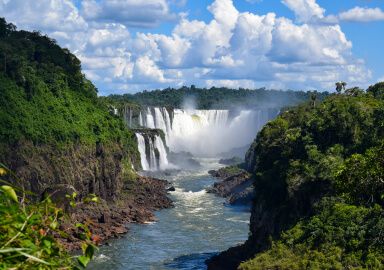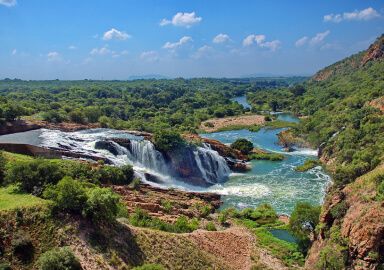Golden Dorado
Golden dorado are charismatic and flamboyant apex predators and excellent fighting fish found in many rivers of central and southern South America.
View 18 listings
18
listings
–
price starting from
8
countries
–
to the nearest trip
Where and When?
The freshwater rivers and lakes of much of central and southern South America are home to golden dorado. The best fishing is found in southern Brazil, Uruguay, Paraguay and northern Argentina where most of the rivers begin in the western or central mountains and flow eastwards to the ocean. The fish can often be found from the river deltas right up to the mountain torrents, depending on the time of year. Fishing in the lower reaches of rivers can usually be successful all year round but the upper regions are often better around spawning times. The species, as an ambush predator, is very fond of any structure such as rocks, submerged branches, overhanging branches and the edges of sandbanks. With their large eyes the fish are mostly daytime, optic feeders. In some areas of their range populations have declined markedly through commercial overfishing and dams which obstruct their essential upstream spawning migrations. On the other hand, they have also been introduced to systems outside their natural range where they have proliferated. This produces new angling areas but it is to the detriment of some of the indigenous species.
About Golden Dorado
Golden dorado are a “salmon shaped” fish, complete with adipose fins, large heads and huge mouths armed with many sharp teeth. While they bear no close relationship with true salmonids, they fill a similar, though usually warmer, niche. As the name implies they are golden, but only really on the underside and flanks. The name is appropriate as they usually repeatedly jump well clear of the water when hooked and their rich golden colour is then very evident. Their upper sides are silver with many black or dark spots. Females are larger than males and golden dorado can grow to a truly impressive 34 kilograms (75 lbs) at a length of 1.3 meters (57 in.) in a lifespan of up to 15 years. Adults feed almost exclusively on fish but, as top predators, they will opportunistically take anything including lizards, birds and rodents. They often migrate hundreds of kilometers upstream to spawn in summer and large females are reported to lay over two million eggs. They are usually solitary but aggregate before upstream migrations. Learn more about life history of golden dorado from our blog
How to Catch?
The best means to target golden dorado depends on where you are fishing and what size specimens you are targeting but fly fishing is usually seen as the best sport option. Boats are essential in most large river, deep water situations to safely and efficiently access the right areas and may also be critically important to move through dense jungle up mountain streams. The best golden dorado experiences and memories, however, may be obtained by stalking on foot up mountain cascades to cast a fly, by sight, towards a very large, cruising fish that repeatedly explodes from the water on being hooked. Most golden dorado sport anglers use large, colourful flies. The mouths of the fish are hard cartilage and bone and striking as you would for a trout is a mistake. To hook a golden dorado the strike has to be quick and very firm, as it would be for the African tiger fish or most marine carangids. Golden dorado must be one of the very top priority species for any true fly fishing fanatic.








